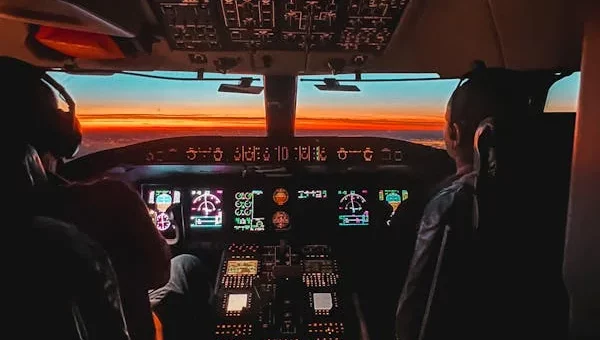
Introduction
Flying a military aircraft is a unique blend of skill, technology, and mental endurance. Life inside a military cockpit offers a vantage point few ever experience, combining cutting-edge instrumentation with high-stakes missions that demand split-second decisions. For fighter pilots, the cockpit is both a command center and a battlefield, requiring mastery of complex systems under extreme conditions.
This article delves deeply into what it’s like inside the cockpit of a military aircraft from a pilot’s perspective. We explore the technological environment, daily routines, the psychological and physical challenges faced by pilots, and how cockpit life shapes the identity and resilience of those who fly.
Table of Contents
-
The Military Cockpit: An Overview
1.1 Cockpit Layout and Technology
1.2 Types of Military Aircraft and Their Cockpits -
A Pilot’s Daily Routine in the Cockpit
2.1 Pre-Flight Preparations and Briefings
2.2 Flight Operations and Mission Execution -
Challenges Faced Inside the Cockpit
3.1 Physical Demands and G-Forces
3.2 Psychological Stress and Decision Making -
Cockpit Communication and Team Dynamics
4.1 Interactions with Ground Control and Wingmen
4.2 Use of Advanced Communication Systems -
Training and Adaptation to Cockpit Life
5.1 Simulator Training and Skill Development
5.2 Coping Mechanisms and Mental Conditioning -
Conclusion: The Cockpit as a World of Its Own
1. The Military Cockpit: An Overview
1.1 Cockpit Layout and Technology
The cockpit of a military aircraft is a highly specialized environment designed for maximum efficiency and control. Unlike commercial aircraft, military cockpits are compact and densely packed with instruments, switches, and digital displays. Every control, button, and screen is purposefully placed to allow the pilot to manage navigation, weapons systems, communications, and flight controls without distraction.
Modern fighter jets feature:
-
Heads-Up Displays (HUD): Project critical flight information directly in the pilot’s line of sight.
-
Multi-Function Displays (MFDs): Allow pilots to customize their data view, switching between radar, navigation, and weapon status.
-
Fly-by-Wire Controls: Replace traditional mechanical controls with electronic interfaces, improving response time and precision.
This technology enables pilots to maintain situational awareness even in highly dynamic combat situations.
1.2 Types of Military Aircraft and Their Cockpits
Military cockpits vary significantly depending on the aircraft type:
-
Fighter Jets (e.g., F-22, F-35): Single or dual-seat configurations focused on agility and weapons control.
-
Bombers (e.g., B-2 Spirit): Larger cockpits with crew members sharing roles like navigation and weapons systems.
-
Transport Aircraft (e.g., C-130 Hercules): Spacious cockpits designed for long-duration missions with advanced navigation systems.
Each cockpit reflects the aircraft’s mission requirements, influencing the pilot’s experience and cockpit workload.
2. A Pilot’s Daily Routine in the Cockpit
2.1 Pre-Flight Preparations and Briefings
Before entering the cockpit, pilots engage in rigorous preparations. These include detailed briefings on mission objectives, weather conditions, and aircraft status. Pilots meticulously review flight plans, emergency procedures, and coordinate with ground crews to ensure the aircraft is mission-ready.
Pre-flight cockpit checks involve testing every system, from avionics to life-support equipment. This process is critical; any oversight could jeopardize the mission or pilot safety.
2.2 Flight Operations and Mission Execution
Once airborne, the pilot’s focus shifts to precise control and real-time decision making. Tasks include:
-
Monitoring flight instruments and adjusting controls for optimal performance.
-
Navigating through hostile or challenging environments using onboard radar and sensors.
-
Managing weapon systems during combat missions, often under extreme pressure.
Pilots must remain alert to rapidly changing conditions, communicating constantly with other aircraft and command centers.
3. Challenges Faced Inside the Cockpit
3.1 Physical Demands and G-Forces
Flying at high speeds and performing aerial maneuvers exposes pilots to intense physical stress, particularly from G-forces that can exceed 9G during tight turns. These forces:
-
Cause blood to drain from the brain, risking G-LOC (G-force induced Loss Of Consciousness).
-
Require pilots to wear G-suits that apply pressure to maintain blood flow.
-
Demand exceptional physical conditioning to endure sustained missions.
Additionally, cockpit environments can be cramped and uncomfortable, with limited space for movement.
3.2 Psychological Stress and Decision Making
The mental demands of cockpit life are profound. Pilots must:
-
Make instantaneous life-or-death decisions with incomplete information.
-
Manage high-stakes combat scenarios and unexpected technical failures.
-
Maintain focus despite fatigue, noise, and vibration.
This psychological pressure requires resilience and rigorous mental training.
4. Cockpit Communication and Team Dynamics
4.1 Interactions with Ground Control and Wingmen
Effective communication is vital for mission success. Pilots rely on:
-
Constant updates from Air Traffic Control (ATC) and mission command centers.
-
Coordination with wingmen to execute complex maneuvers and tactics.
-
Sharing situational awareness to avoid friendly fire and enemy detection.
Trust and clarity in communication can mean the difference between mission success and failure.
4.2 Use of Advanced Communication Systems
Military cockpits are equipped with encrypted radios, data links, and satellite communications that allow:
-
Real-time data sharing between aircraft and command units.
-
Secure transmission of sensitive mission information.
-
Integration with battlefield networks for coordinated operations.
These systems enhance strategic flexibility and operational efficiency.
5. Training and Adaptation to Cockpit Life
5.1 Simulator Training and Skill Development
Pilots spend countless hours in flight simulators that replicate cockpit conditions with high fidelity. Simulator training enables:
-
Mastery of complex systems without risk.
-
Practice of emergency scenarios and combat missions.
-
Gradual adaptation to cockpit controls and instrument layouts.
Such training is essential before pilots undertake real missions.
5.2 Coping Mechanisms and Mental Conditioning
To handle cockpit stress, pilots develop coping strategies including:
-
Mindfulness and visualization techniques to enhance focus.
-
Physical fitness regimes to improve endurance.
-
Peer support and counseling for psychological well-being.
These measures help maintain peak performance and mental health.
Conclusion: The Cockpit as a World of Its Own
Life inside a military cockpit is a demanding, exhilarating experience that combines human skill with technological prowess. From the intricate cockpit layouts to the intense physical and mental challenges, pilots operate in a unique world where every second counts.